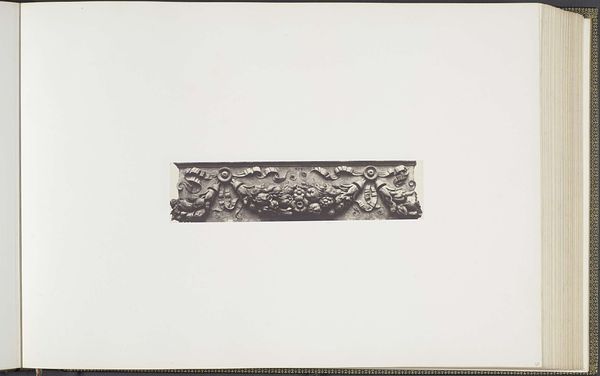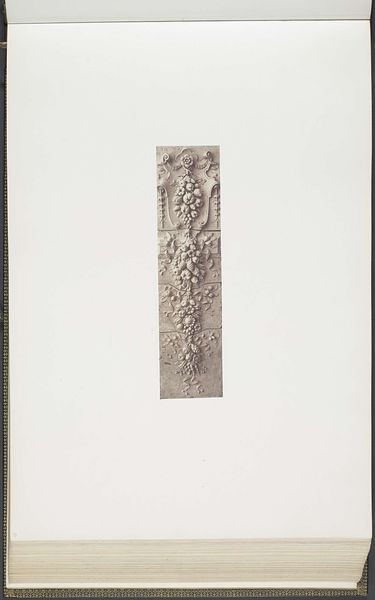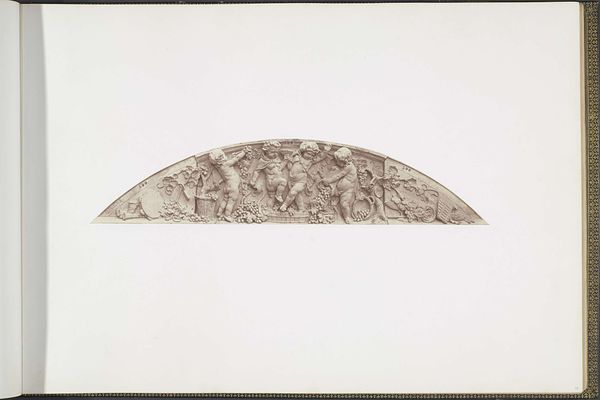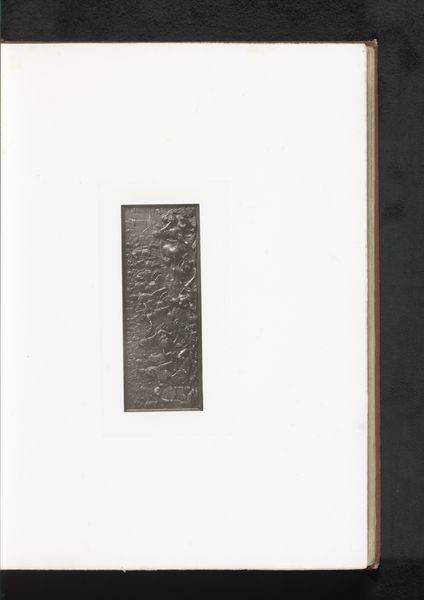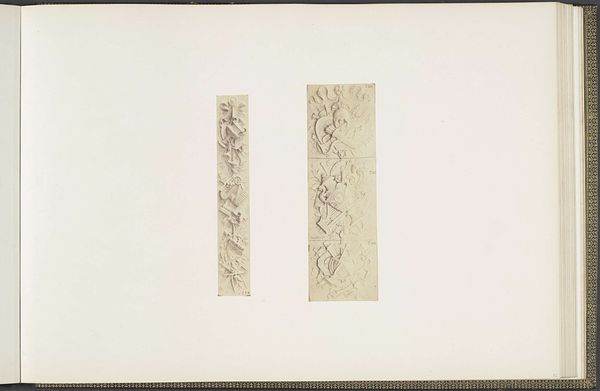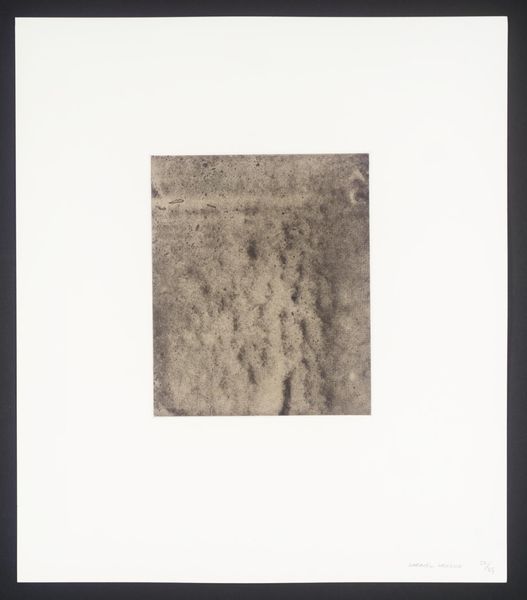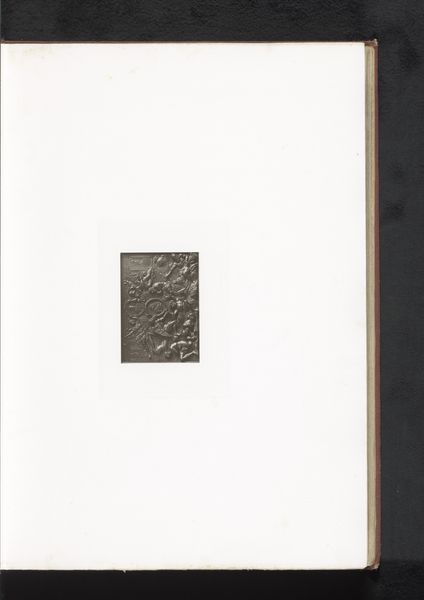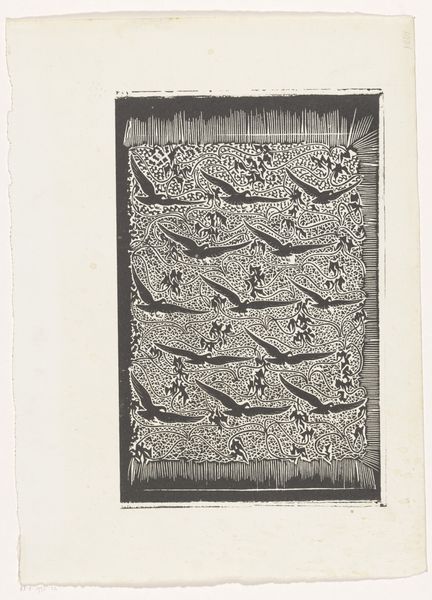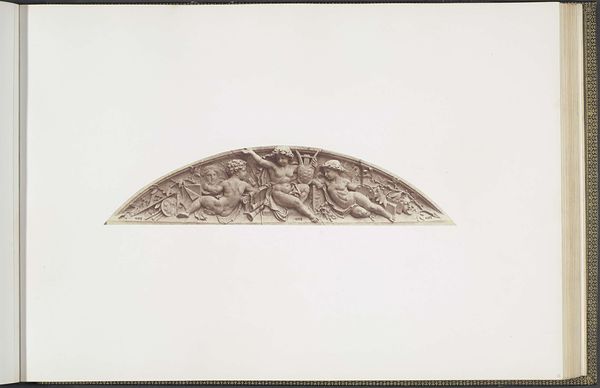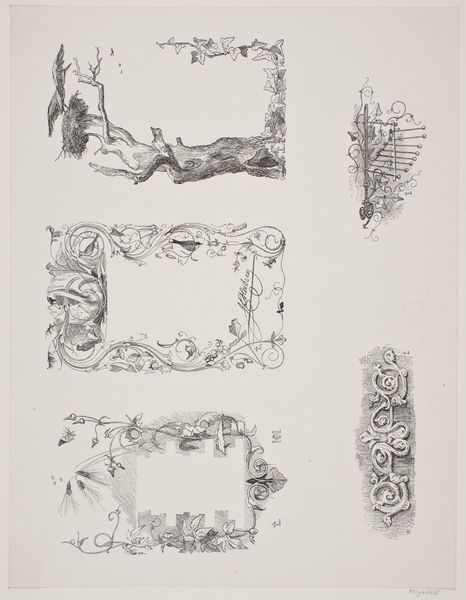
Detail van een gipsmodel voor het fries op het Palais du Louvre door Léon Falconnier c. 1855 - 1857
0:00
0:00
#
light pencil work
#
ink paper printed
#
incomplete sketchy
#
hand drawn type
#
personal sketchbook
#
hand-drawn typeface
#
pen-ink sketch
#
ink colored
#
sketchbook drawing
#
sketchbook art
Dimensions: height 378 mm, width 556 mm
Copyright: Rijks Museum: Open Domain
Editor: So, here we have "Detail van een gipsmodel voor het fries op het Palais du Louvre door Léon Falconnier," dating from around 1855-1857. It's currently held at the Rijksmuseum. Looking at this sketch of a frieze design, I'm struck by its sort of raw, almost utilitarian feel. What’s your take on it? Curator: The choice of a sketch, of a design object intended for mass production, is telling. We often separate “high art” like paintings, from the processes and materiality of building, ornamenting. But look closely - this isn’t just a pretty floral design. Editor: What do you mean? Curator: Think about what it is showing and how it was going to be used, and the materials chosen for it: a plaster model. It served a functional purpose, right? And how many people would have worked on creating both this design and turning it into reality on the Louvre, making molds, casting in quantity, installing...? Editor: So you're saying its value isn't necessarily aesthetic, but linked to labor? Curator: Exactly! Consider the political implications too. Who was benefiting from the construction and ornamentation of the Louvre? What did that symbolize about the French government, the Second Empire at that time, its control over material production? The artist, or designer, creates it, but hundreds bring that design into material reality, building literally and figuratively the French State's aesthetic of greatness. It points to a complex network of manufacture and consumption. It's important to ask about those individuals! Editor: That’s given me a whole new perspective. I was seeing the art *in* the sketch but, thanks to your input, I can also appreciate it as part of this whole manufacturing and political *process*. Curator: Precisely, recognizing art embedded in broader contexts of labour and production changes how we understand the power it embodies.
Comments
No comments
Be the first to comment and join the conversation on the ultimate creative platform.
